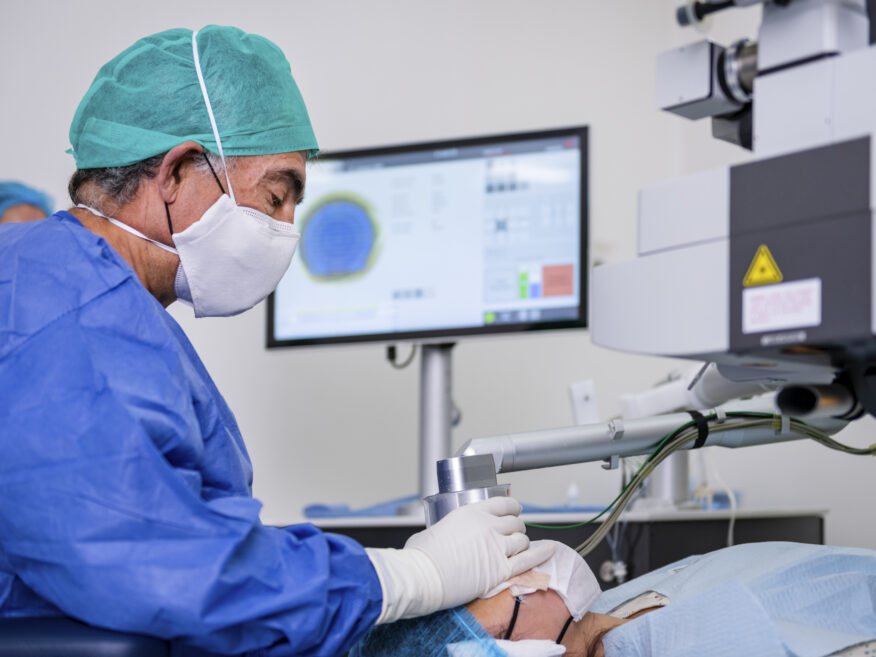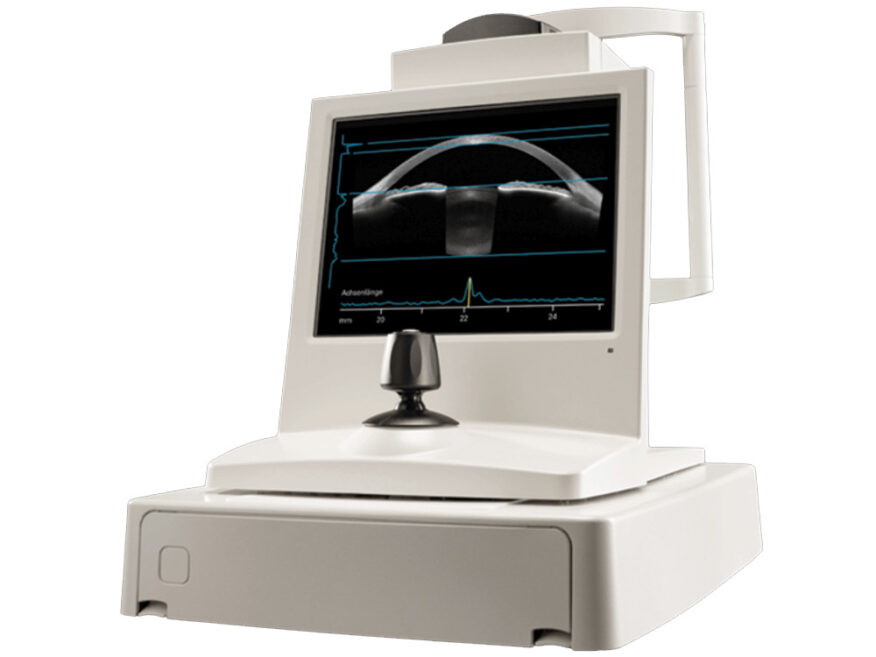Hyperopia, or farsightedness, occurs when the eyeball is too short or the cornea has too little curvature, causing light to focus behind the retina. It is treated with glasses, contact lenses, or refractive surgery such as LASIK, PRK, or lens-based procedures.
Hyperopia
Condition
Hyperopia
Hyperopia (farsightedness) is a common refractive error that causes people to see distant objects very well but have difficulty focusing on objects that are up close.
An Overview: Hyperopia
At a Glance:
- People with hyperopia see things that are far away better than things that are up close
- The eye is shorter than normal, or the cornea is too flat
- The condition becomes worse with age
Hyperopia is also called farsightedness. Farsighted people see things best when they are far away but have trouble seeing things that are closer. This condition occurs when the eye is shorter than normal or has a cornea that is too flat. Light entering the eye comes into focus behind the retina instead of precisely on the retina. This allows you to see distant objects clearly, but nearby objects will appear more blurred. Hyperopia is an eye focusing disorder, not an eye disease.
People experience hyperopia differently. Some people may not notice any problems with their vision, especially when they are young. People with mild hyperopia may have no trouble seeing things that are far away, but people with severe hyperopia often have trouble seeing clearly, even at a distance. Hyperopia often becomes worse as the eyes lose focusing power with age.
Some of the Signs and Symptoms of Hyperopia Include:
- Difficulty with close tasks, like reading
- Eyestrain
- Squinting
- Headaches
Hyperopia Treatment and Surgeries
At CODET Vision Institute, our Ophthalmologists can diagnose hyperopia as part of a comprehensive eye examination. Treatments for hyperopia are designed to change the way that light rays are bent when they enter the eye so that they come into a point of focus precisely on the retina.
These Treatments May Include:
- Prescription eyeglasses or contact lenses to compensate for the eye’s inability to focus
- Refractive surgery: All-Laser-LASIK
- Refractive Lens Exchange with PanOptix and Light Adjustable Lens (LAL)
- Intraocular Collamer Lens (ICL) for severe hyperopia
When hyperopia causes blurry vision, these treatments may help restore vision clarity, making daily activities much easier.

Why CODET for Hyperopia?
Global leaders for Hyperopia treatment and surgery
- Dr. Arturo Chayet invented All-Laser-LASIK
- More than 25 years of leading experience in hyperopia laser correction
State of the art technology for diagnostic and surgical equipment
- CODET Vision is one of the most prolific centers in the world for ICLs for high degree hyperopia
- The CODET LASIK System utilizes a combination of patient selection and diagnostics for optimal results

About our Technology and Facilities
CODET provides our experienced doctors with advanced, proven technology and the finest surgical rooms and equipment. We are a team of specialists who work and consult together with one goal: to provide the best care available anywhere in the world to our patients. Among our hyperopia diagnostic and laser technology are:
- CODET is among the few eye clinics worldwide to possess such an advanced collection of diagnostic equipment
- Anterion. Provides the most advanced examinations and measurement of the structure of the anterior segment of the eye
- Corvis & Pentacam. Provides the most advanced diagnostics for cornea biomechanics laser technology
- Femto LDV Z8
- WaveLight EX500 Excimer Laser
What is Hyperopia?
A quick and easy look on hyperopia.
INSIGHTS: A PATIENT STORY
Our patient is a professional Muay Thai Coach, and when training, he couldn’t even see the close punches coming. For his lifestyle, he was looking for a correction, instead of wearing glasses or contacts.
I had LASIK surgery yesterday and woke up this morning and saw everything, so much clarity, it's amazing
Andrew Scott All-Laser-LASIK Cardiff, CA, US